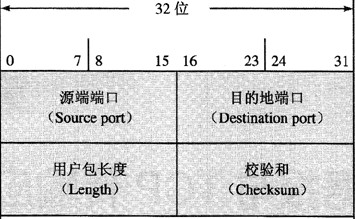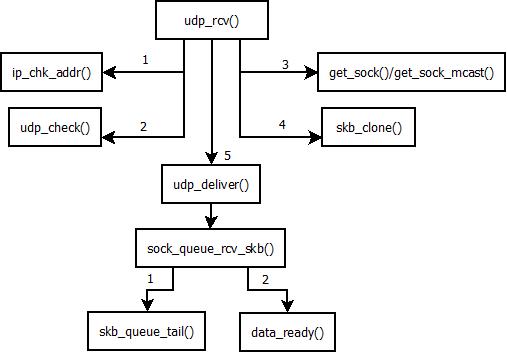Linux内核:从底层向上分析传输层之UDP协议
作者:网络转载 发布时间:[ 2012/12/27 10:30:20 ] 推荐标签:
这里看看数据包从IP层是如何交给传输层来处理的,为了方便,这里传输层以UDP协议为例来分析。
从ip_rcv()函数中可以看到
/*
* Pass on the datagram to each protocol that wants it,
* based on the datagram protocol. We should really
* check the protocol handler's return values here...
*/
ipprot->handler(skb2, dev, opts_p ? &opt : 0, iph->daddr,
(ntohs(iph->tot_len) - (iph->ihl * 4)),
iph->saddr, 0, ipprot);
这里调用指定协议的handler函数,如果是UDP协议,该函数的定义 udp_protocol如下
static struct inet_protocol udp_protocol = {
udp_rcv, /* UDP handler */
NULL, /* Will be UDP fraglist handler */
udp_err, /* UDP error control */
&tcp_protocol, /* next */
IPPROTO_UDP, /* protocol ID */
0, /* copy */
NULL, /* data */
"UDP" /* name */
};
先看UDP协议数据报的报头定义如下:比较简单

struct udphdr {
unsigned short source;//源端口
unsigned short dest;//目的端口
unsigned short len;//数据包长度
unsigned short check;//检验和
};
下面分析下udp_rcv()函数,流程图:

相关推荐

更新发布
功能测试和接口测试的区别
2023/3/23 14:23:39如何写好测试用例文档
2023/3/22 16:17:39常用的选择回归测试的方式有哪些?
2022/6/14 16:14:27测试流程中需要重点把关几个过程?
2021/10/18 15:37:44性能测试的七种方法
2021/9/17 15:19:29全链路压测优化思路
2021/9/14 15:42:25性能测试流程浅谈
2021/5/28 17:25:47常见的APP性能测试指标
2021/5/8 17:01:11













 sales@spasvo.com
sales@spasvo.com